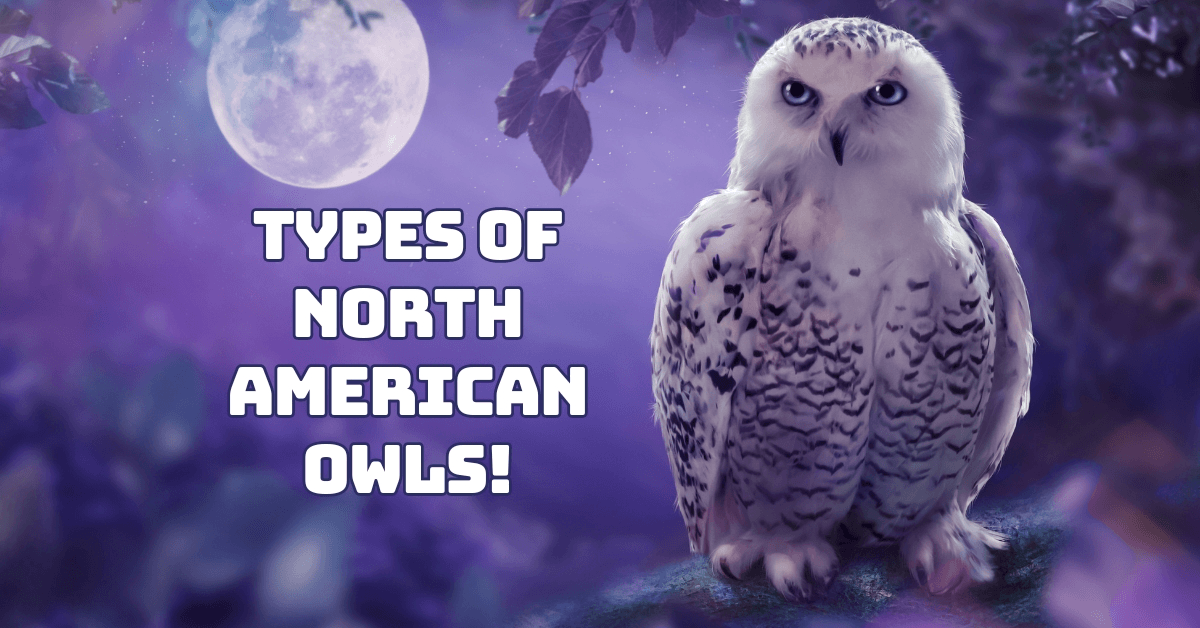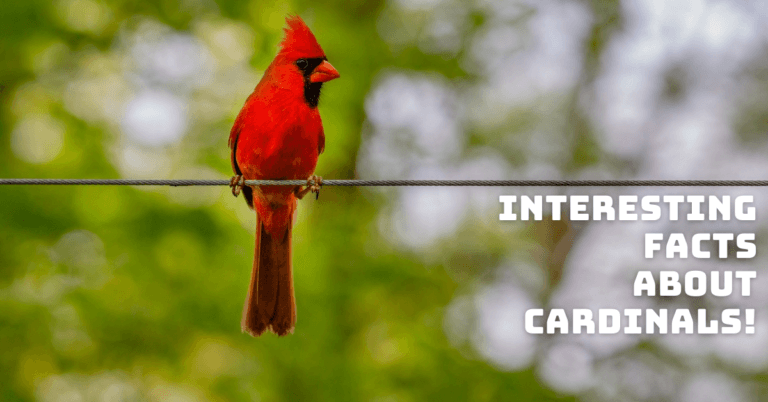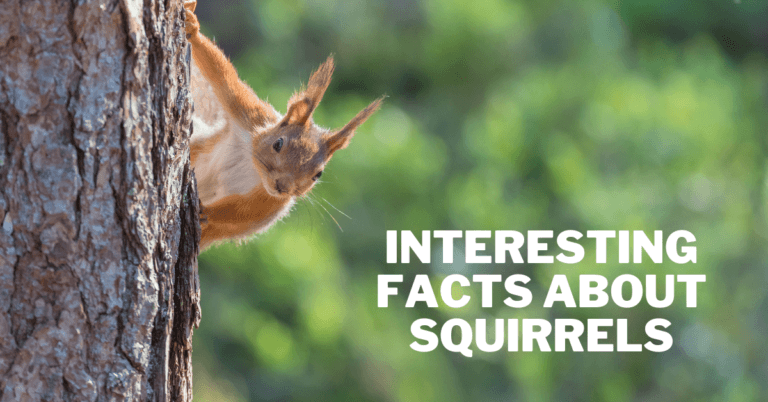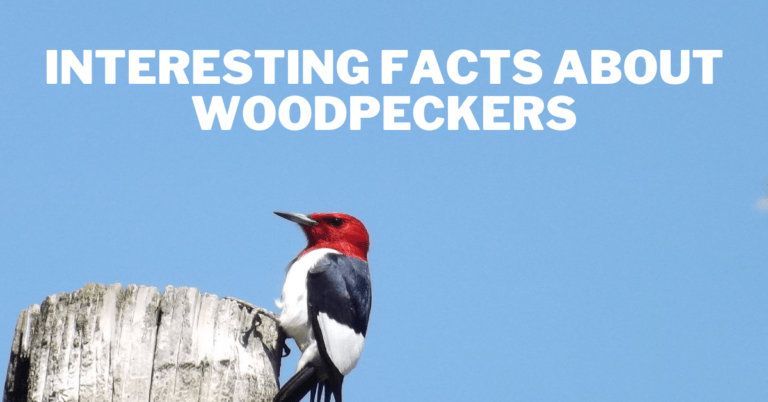Types Of North American Owls
Types Of North American Owls
Have you ever wondered about the mysterious nocturnal hunters that glide silently through the North American night skies? North America is home to various owls, each with unique characteristics and behaviours.
From the tiny Northern Saw-whet Owl to the majestic Great Horned Owl, these birds of prey play crucial roles in their ecosystems.
Owls like the Snowy Owl, with its striking white plumage, and the Barred Owl, known for its distinctive call, showcase the incredible diversity within the region.
Their adaptations and habitats offer a glimpse into the intricate balance of nature in North America's wilderness.
Types Of North American Owls
North America boasts various owl species, each adapted to multiple habitats and ecological niches. Here are some notable types:

1. Great Horned Owl (Bubo virginianus)
The Great Horned Owl is a large owl that measures 18-25 inches long and has a wingspan of 36-60 inches.
Known for its distinctive ear tufts and deep hooting call, this owl is one of North America's most widespread and adaptable.
It flourishes in many habitats, encompassing forests, deserts, and urban areas. Its versatile diet includes mammals, birds, and reptiles, showcasing its formidable hunting skills.
Notable for its powerful talons and fierce hunting skills, the Great Horned Owl is a dominant nocturnal predator, active primarily at night.
The Great Horned Owl's adaptability and wide range make it a prominent and familiar presence across the continent.
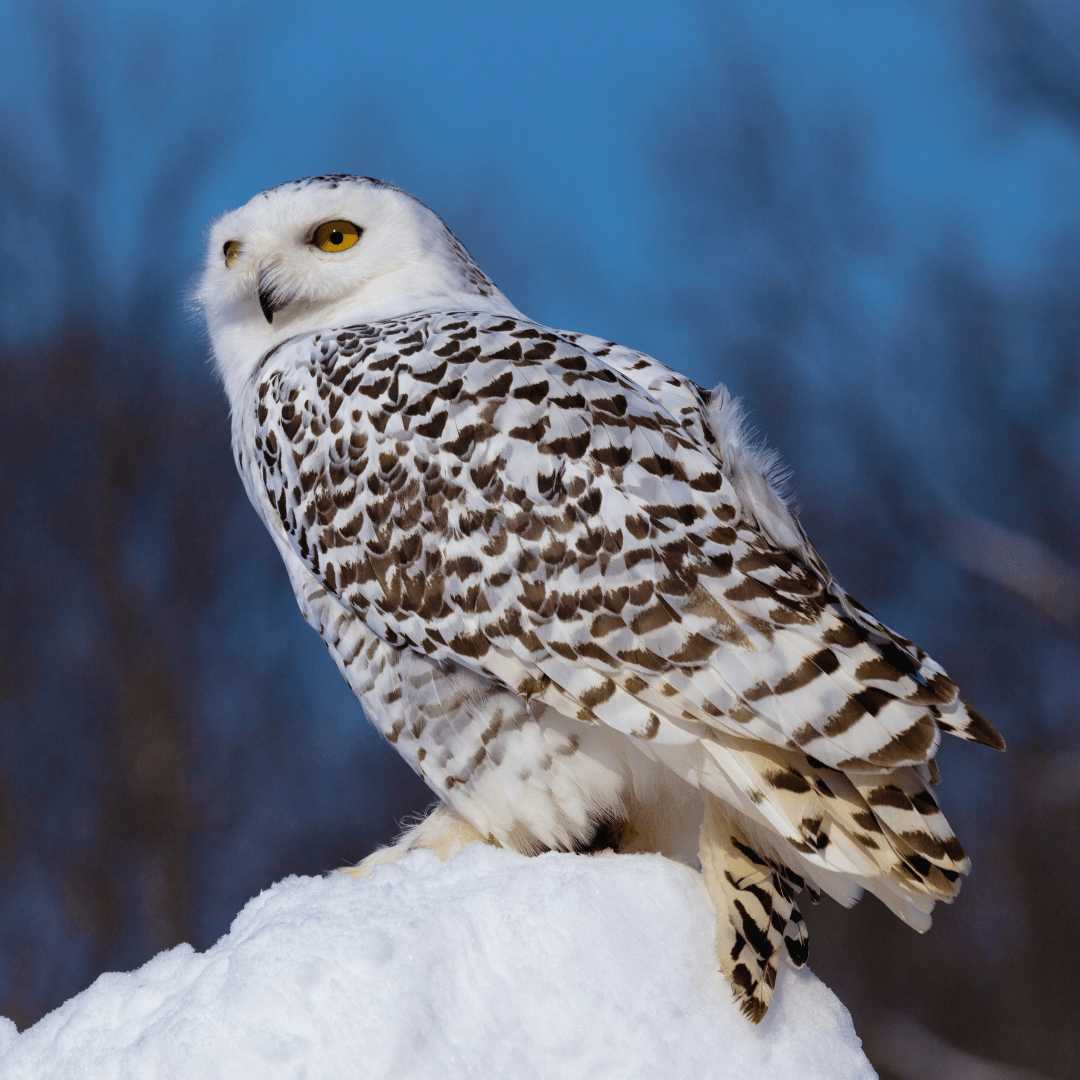
2. Snowy Owl (Bubo scandiacus)
The Snowy Owl (Bubo scandiacus) is a majestic, large owl, measuring 20-28 inches long with an impressive wingspan of 49-57 inches. Its striking white plumage and piercing yellow eyes make it instantly recognizable.
These owls undertake long winter migrations from the Arctic tundra to North America, and they are often spotted in open fields, coastlines, and airports.
Snowy Owls primarily hunt small mammals and birds, showcasing their adaptability in diverse habitats.
Their appearance in more temperate regions during colder months is a captivating reminder of the Arctic's harsh beauty extending into new territories.

3. Barn Owl (Tyto alba)
The Barn Owl (Tyto alba) is distinguishable by its heart-shaped facial disk and pale colouration.
This medium-sized owl, 12-15 inches long and has a wingspan of 39-49 inches, thrives in open habitats like grasslands and agricultural fields.
Equipped with exceptional hearing and silent flight, it hunts primarily for rodents, making it a valuable ally to farmers.
With its keen eyesight and specialized feather structure for silent flight, the Barn Owl effortlessly navigates through the darkness of night to fulfil its ecological role as a proficient rodent controller in agricultural landscapes.
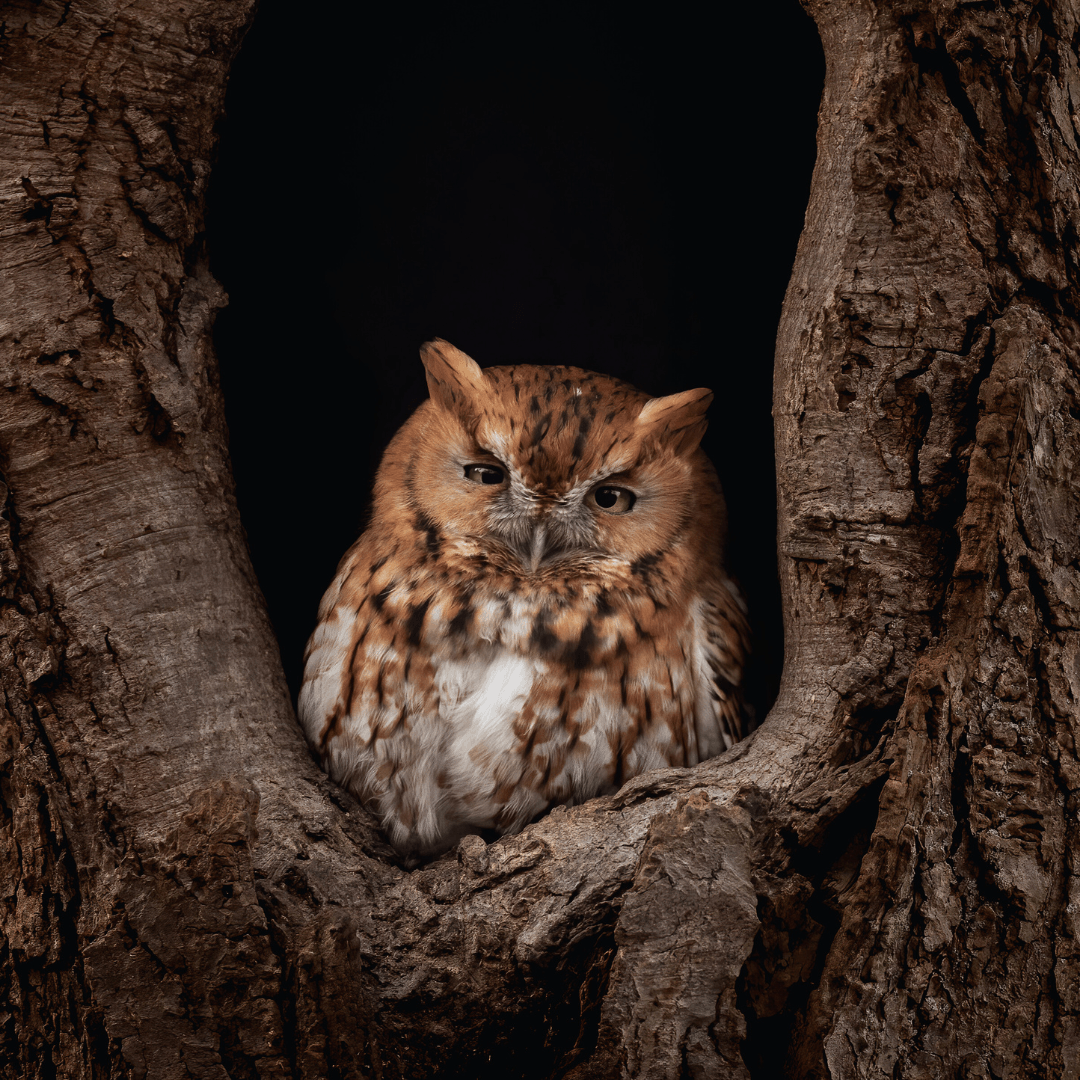
4. Eastern Screech-Owl (Megascops asio)
The Eastern Screech-Owl (Megascops asio) is a small owl commonly found in wooded areas across eastern North America.
Typically spanning 6 to 10 inches in length and a wingspan of 18 to 24 inches, this owl displays distinctive ear tufts and a range of colorations, from grey to reddish-brown, allowing for effective camouflage among tree bark.
Its distinctive trilling or whinnying call is a familiar sound in its range, often heard during the night.
This owl is a skilled nocturnal hunter. It preys on small mammals, insects, and occasionally small birds, contributing to the delicate balance of its woodland ecosystem.
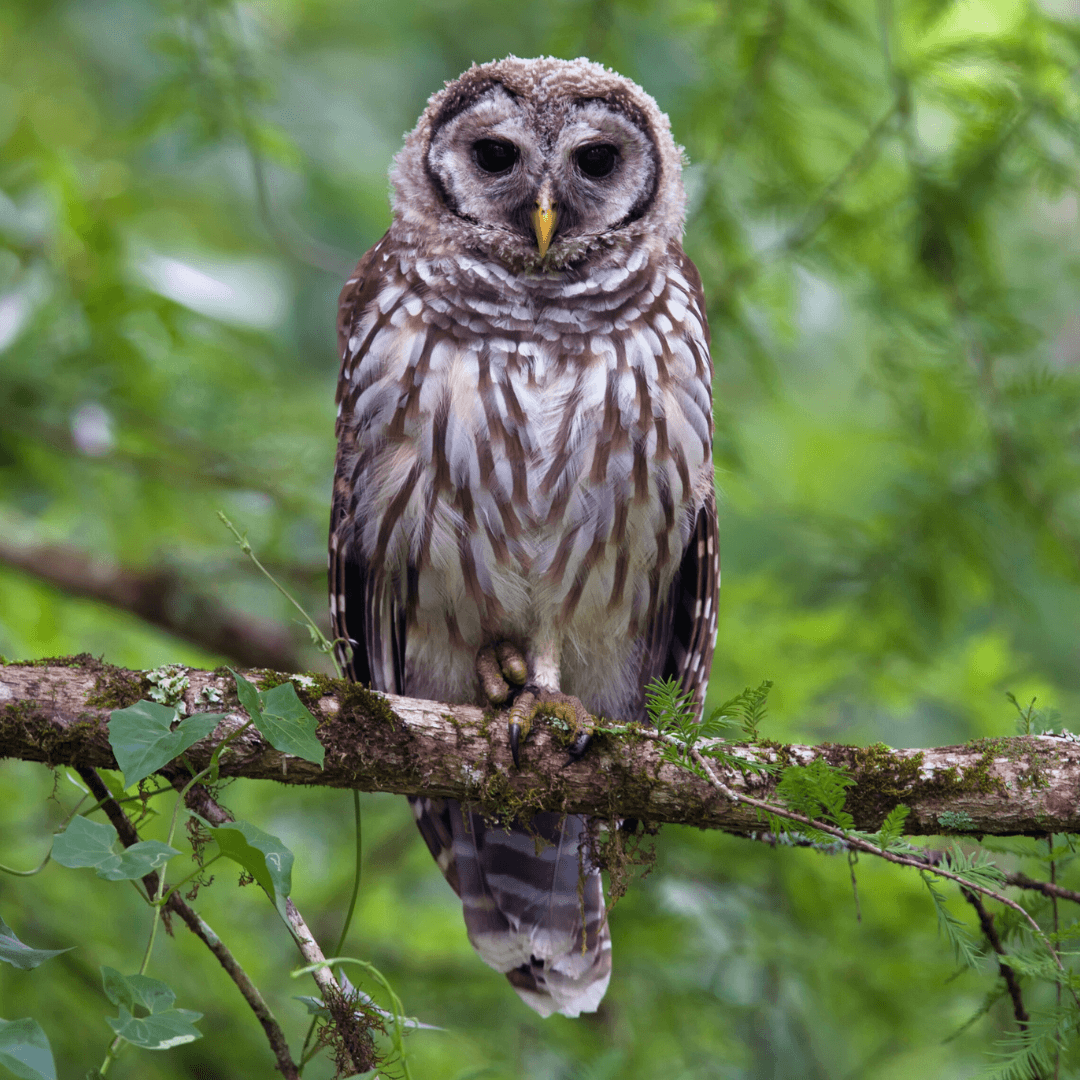
5. Barred Owl (Strix varia)
The Barred Owl (Strix varia) is characterized by its mottled brown and white plumage, with a length of 16-25 inches and a wingspan of 38-49 inches.
It's renowned for its distinctive “Who cooks for you?” call, a haunting melody often heard echoing through mature forests with access to water.
This medium-sized owl is a versatile hunter, preying on small mammals, birds, amphibians, and even fish.
With its keen night vision and silent flight, the Barred Owl thrives in dense woodlands, where it assumes a pivotal responsibility in managing the populations of prey species and ensuring its ecosystem's overall health and balance.
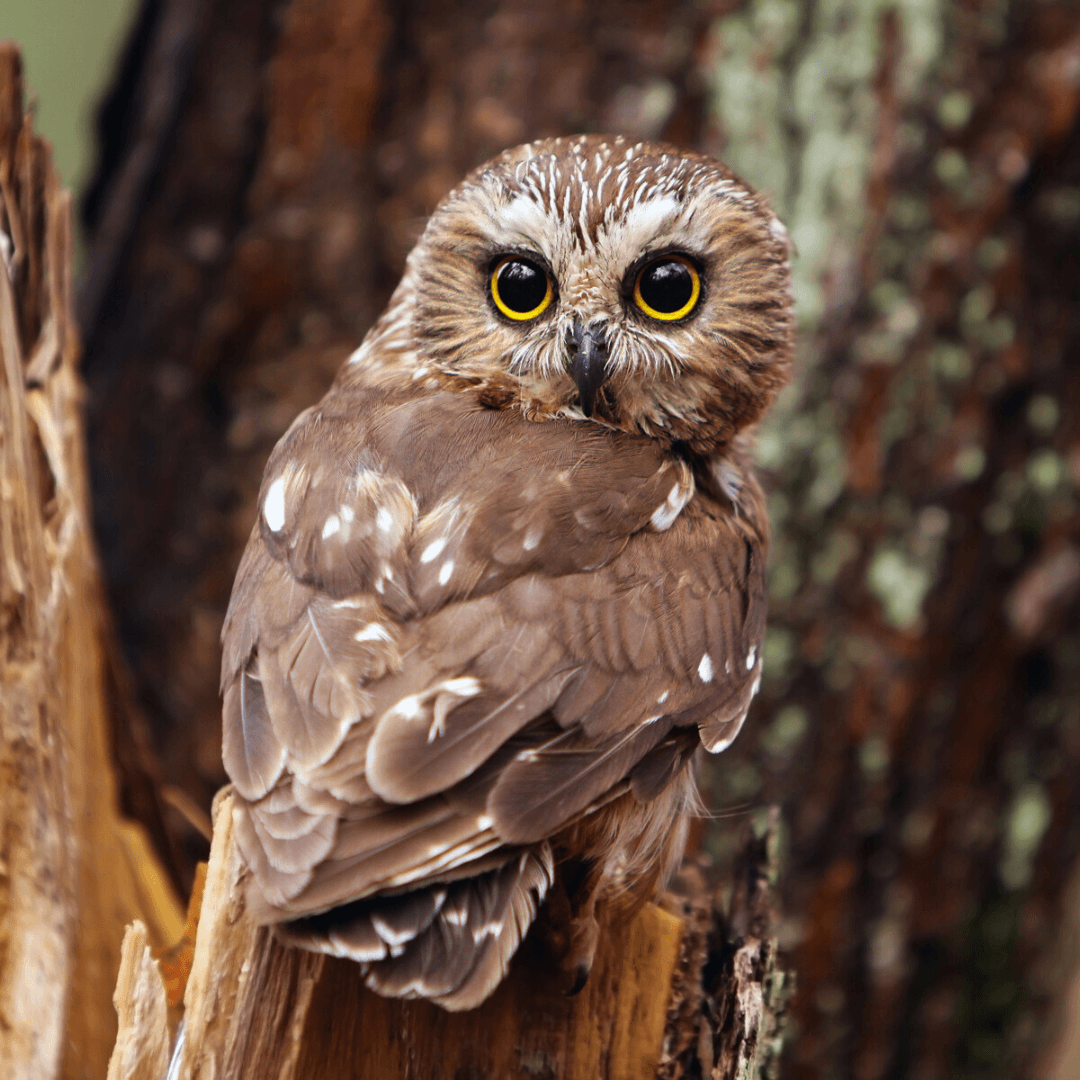
6. Northern Saw-whet Owl (Aegolius acadicus)
Measuring only 7-8 inches in length and 16–18 inches in wingspan, the Northern Saw-whet Owl (Aegolius acadicus) is a small bird.
Sporting a cat-like face with large, round eyes, it's renowned for its melodic, repetitive call, reminiscent of the sound of sharpening a saw—hence its name.
This tiny owl prefers dense forests across the continent. It roosts in coniferous trees during the day and emerges at night to hunt for small mammals, insects, and occasionally birds.
Its cryptic plumage and stealthy nature make it a challenge to spot despite its widespread distribution.

7. Elf Owl (Micrathene whitneyi)
The Elf Owl (Micrathene whitneyi) is the smallest in North America at only 5 to 6 inches in length. Its wingspan is approximately 9 inches.
Found predominantly in desert regions, this owl is a master of adaptation, nesting not only in trees but also in the protective arms of cacti.
Its high-pitched calls, often heard at night in the desert, contribute to its mystical aura. Despite its diminutive size, the Elf Owl exhibits adept hunting skills, targeting insects and small rodents as its primary prey. Its ability to thrive in arid landscapes showcases the resilience and resourcefulness of this enchanting species.
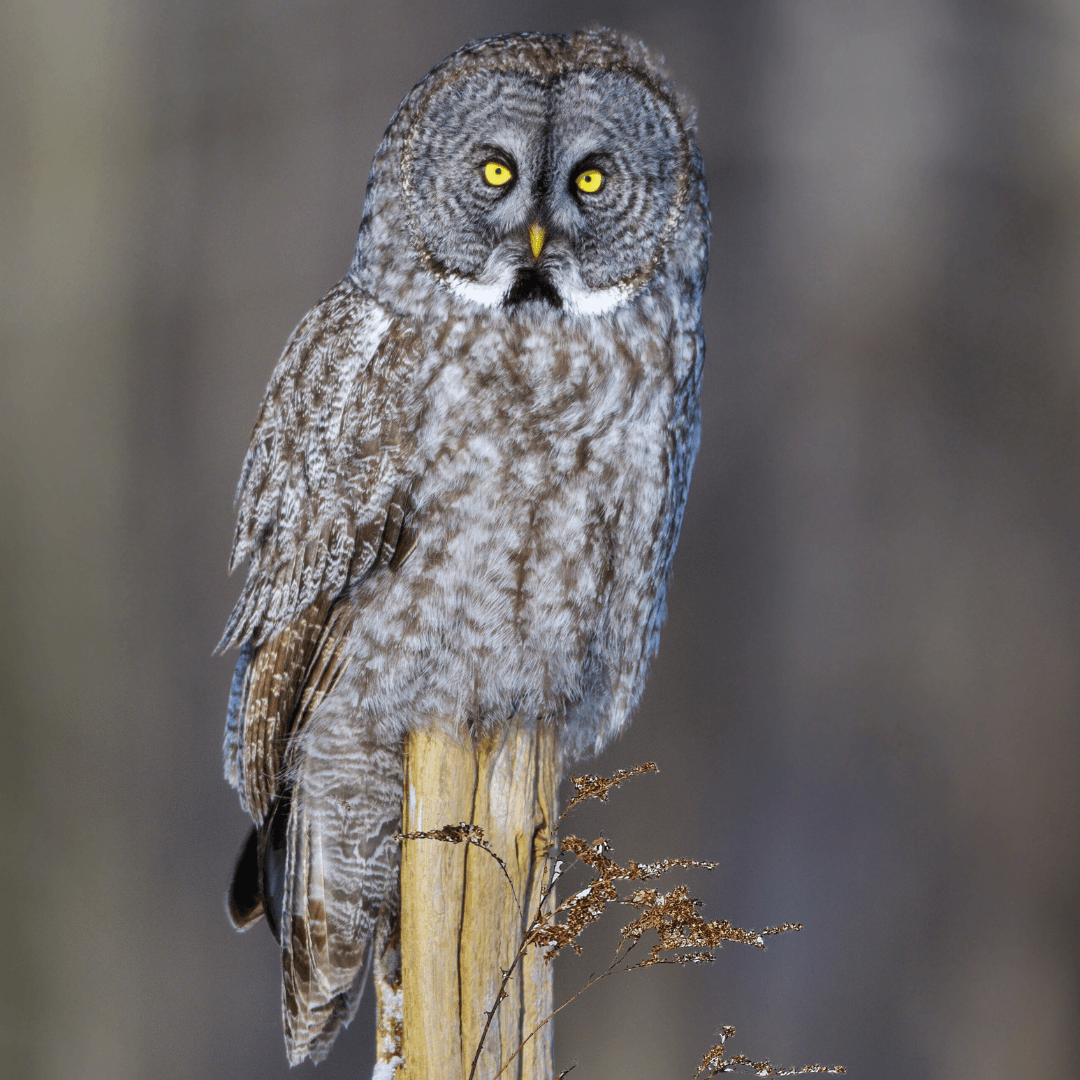
8. Great Gray Owl (Strix nebulosa)
The Great Gray Owl (Strix nebulosa) is the largest giant in North America, reaching up to 32 inches in length and with an impressive wingspan of around 60 inches.
Its notable features include a distinctive facial disk, which aids in sound localization while hunting.
This magnificent owl prefers dense coniferous forests in the continent's northern reaches, where it hunts primarily for small mammals like voles and mice.
With its silent flight and keen senses, the Great Gray Owl is the apex predator of its woodland habitat, embodying grace and power in its majestic presence.
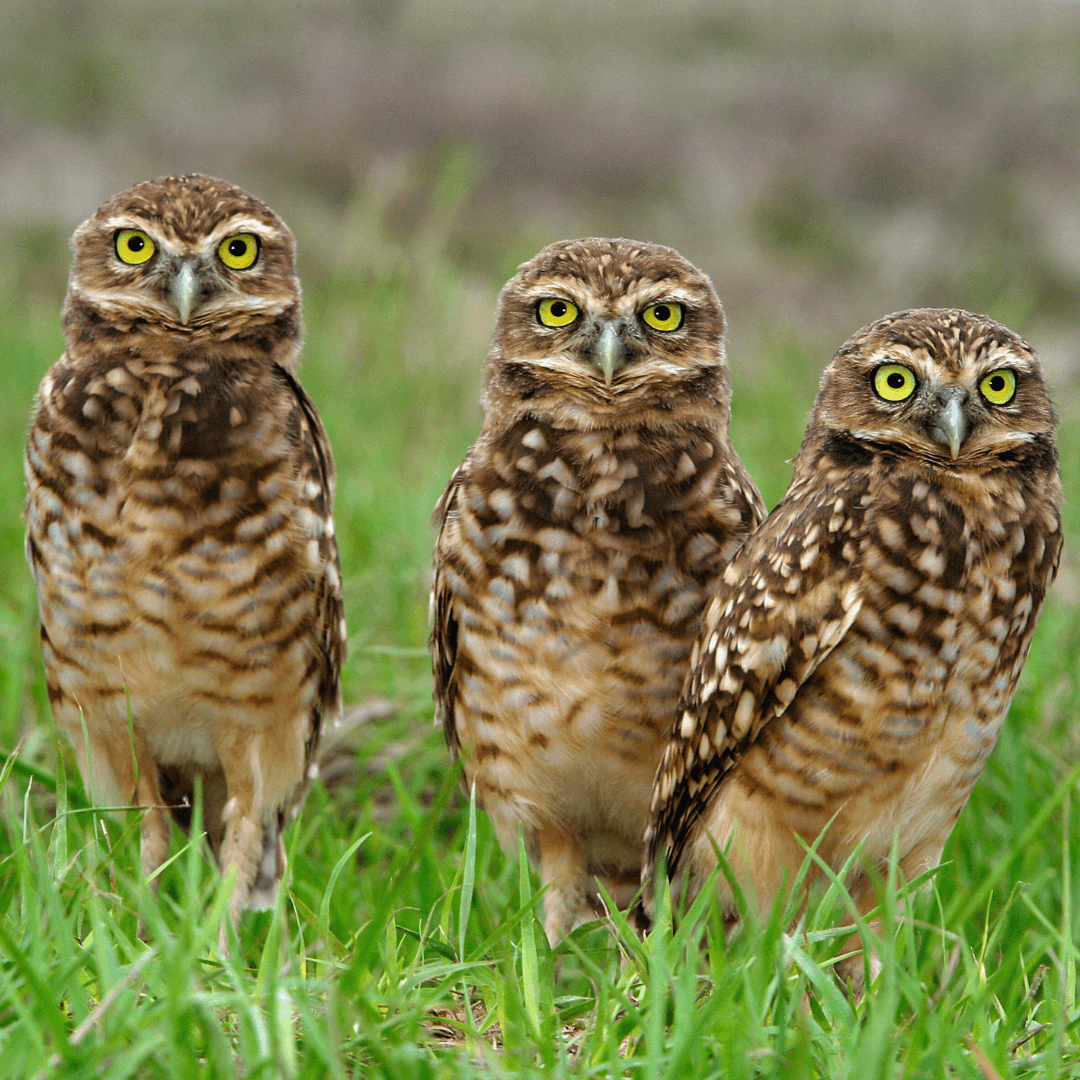
9. Burrowing Owl (Athene cunicularia)
The Burrowing Owl (Athene cunicularia) has unique adaptations for life in open prairies and deserts.
With a height of around 7-10 inches and a wingspan of approximately 20 inches, it's relatively small compared to other owl species.
This diurnal owl exhibits distinctive behaviours, including nesting in abandoned burrows dug by mammals like prairie dogs and ground squirrels.
Its active daytime lifestyle sets it apart from most nocturnal owl species. Despite its small stature, the Burrowing Owl is a skilled hunter, preying on insects, small mammals, and occasionally birds.
Its ability to thrive in open, arid environments highlights its remarkable resilience and adaptability.
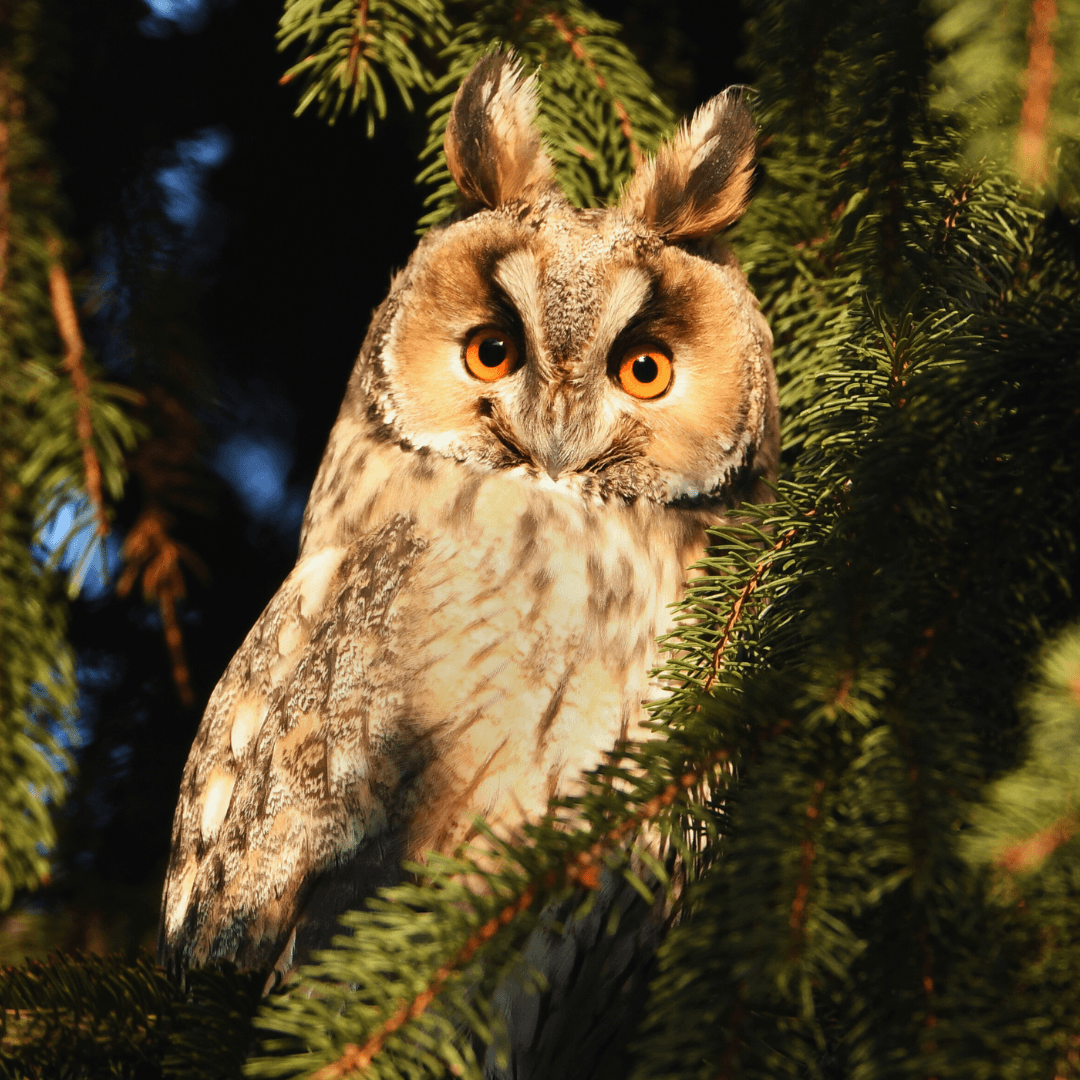
10. Long-eared Owl (Asio otus)
The Long-eared Owl (Asio otus) is characterized by its striking long ear tufts, which give it a distinctive appearance.
This medium-sized owl, measuring 13-16 inches long and with a wingspan of about 35-39 inches, exhibits cryptic colouration and blends seamlessly into its wooded habitats.
Typically found in dense forests and shrublands, it's known to roost in groups during the winter months, providing warmth and protection.
Despite its preference for wooded areas, the Long-eared Owl is also adaptable to various habitats, including marshes and grasslands.
Its keen nocturnal hunting skills make it a formidable predator, preying on small mammals and birds under darkness.
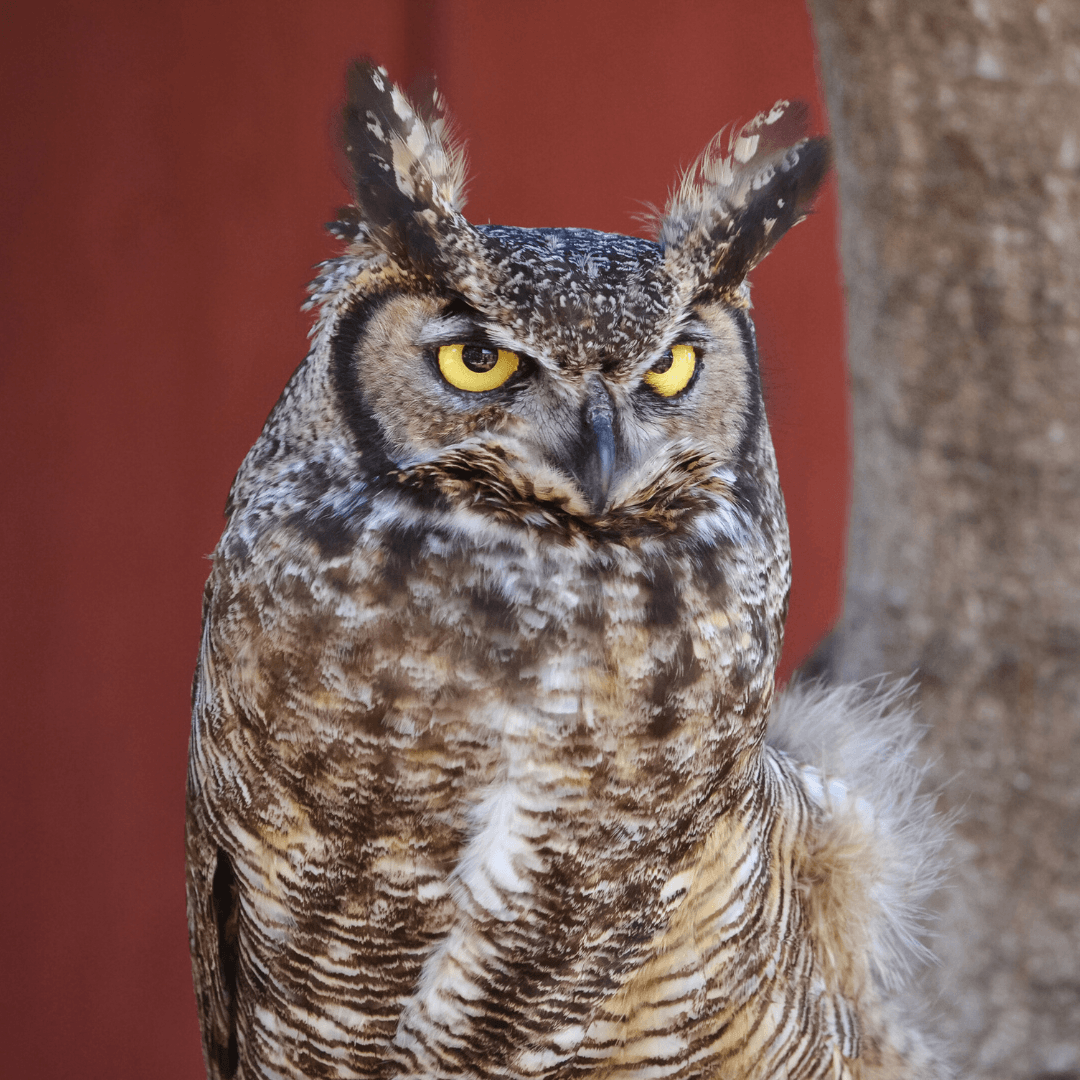
11. Western Screech-Owl (Megascops kennicottii)
The Western Screech-Owl (Megascops kennicottii) resembles its eastern counterpart but is distinguished by its presence in western North America.
With a size ranging from 7 to 10 inches in length and a wingspan of about 18 to 24 inches, it's a compact owl found in diverse habitats, including woodlands, deserts, and even suburban areas.
This owl, recognized by its trilling call, is an adept hunter. In the darkness, it preys on small mammals, birds, and insects.
Its ability to thrive in varied environments underscores its adaptability and resilience across the western landscapes of North America.

12. Short-eared Owl (Asio flammeus)
A medium-sized owl with distinctive short ear tufts, the Short-eared Owl (Asio flammeus) is easily recognized.
It is roughly 13 to 17 inches long and 33 to 43 inches wide and is commonly found in open environments like tundra, marshes, and grasslands.
Unlike many nocturnal owls, the Short-eared Owl is frequently active during the day and dusk. It utilizes its keen senses to hunt small mammals like voles, mice, and occasionally birds.
Its preference for open spaces and diurnal habits make it a captivating sight for birdwatchers and wildlife enthusiasts across its range.
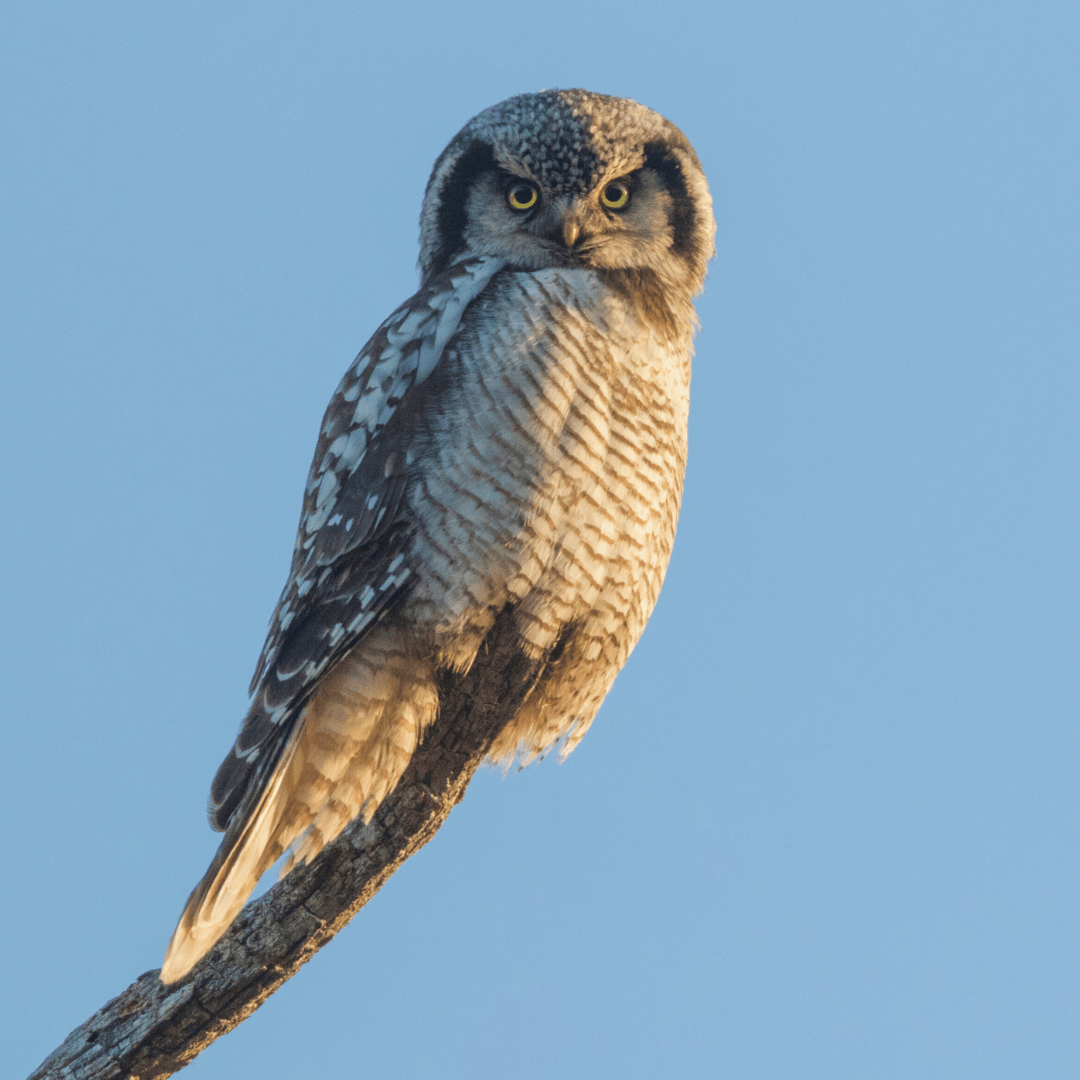
13. Northern Hawk Owl (Surnia ulula)
Unlike many other owl species, the Northern Hawk Owl (Surnia ulula) stands out with its falcon-like silhouette and distinctive diurnal habits.
Typically found in the boreal forests of Canada and Alaska, it has a wingspan of approximately 21 to 24 inches and a length of 14 to 17 inches.
This adept hunter preys on small mammals and birds, employing keen eyesight and sharp talons to capture its quarry.
Its preference for open woodland habitats and daytime hunting behaviour makes it an intriguing species for birders and nature enthusiasts exploring the northern reaches of North America.

14. Flammulated Owl (Psiloscops flammeolus)
The Flammulated Owl (Psiloscops flammeolus) is a small, nocturnal owl characterized by its reddish-brown plumage and dark eyes.
It is relatively petite, measuring about 6 to 7 inches long and has a wingspan spanning approximately 14 to 16 inches.
This owl species is predominantly found in montane forests throughout the western United States and Mexico.
As an insectivore, it primarily feeds on insects such as moths, beetles, and crickets. Its cryptic plumage and nocturnal lifestyle make it a challenging sight for birdwatchers in its forested habitats, adding to its allure and mystery.

15. Whiskered Screech-Owl (Megascops trichopsis)
The Whiskered Screech-Owl (Megascops trichopsis) is a diminutive owl species found primarily in the southwestern United States and Mexico.
Resembling other screech owls in appearance, it boasts a more limited range compared to its relatives.
Typically measuring 7 to 8 inches long with an approximately 18 to 20 wingspan, this owl species thrives in oak and pine-oak woodlands.
Its preference for these specific habitats highlights its ecological niche within the broader ecosystem.
Despite its relatively restricted distribution, the Whiskered Screech-Owl plays a vital role as a predator of insects and small vertebrates, contributing to the balance of its woodland environment.

16. Spotted Owl (Strix occidentalis)
The Spotted Owl (Strix occidentalis) is a medium-sized owl adorned with striking spotted plumage and dark eyes.
Its length ranges from 17 to 19 inches, its wingspan is approximately 40 to 45 inches, and it is predominantly found in old-growth forests across the western United States.
However, its conservation status is a significant concern because of habitat loss from logging activities.
This owl species relies heavily on intact forest ecosystems for nesting and hunting, making it particularly vulnerable to deforestation.
Efforts to protect its habitat are crucial for safeguarding the Spotted Owl's future and preserving its forest home's biodiversity.
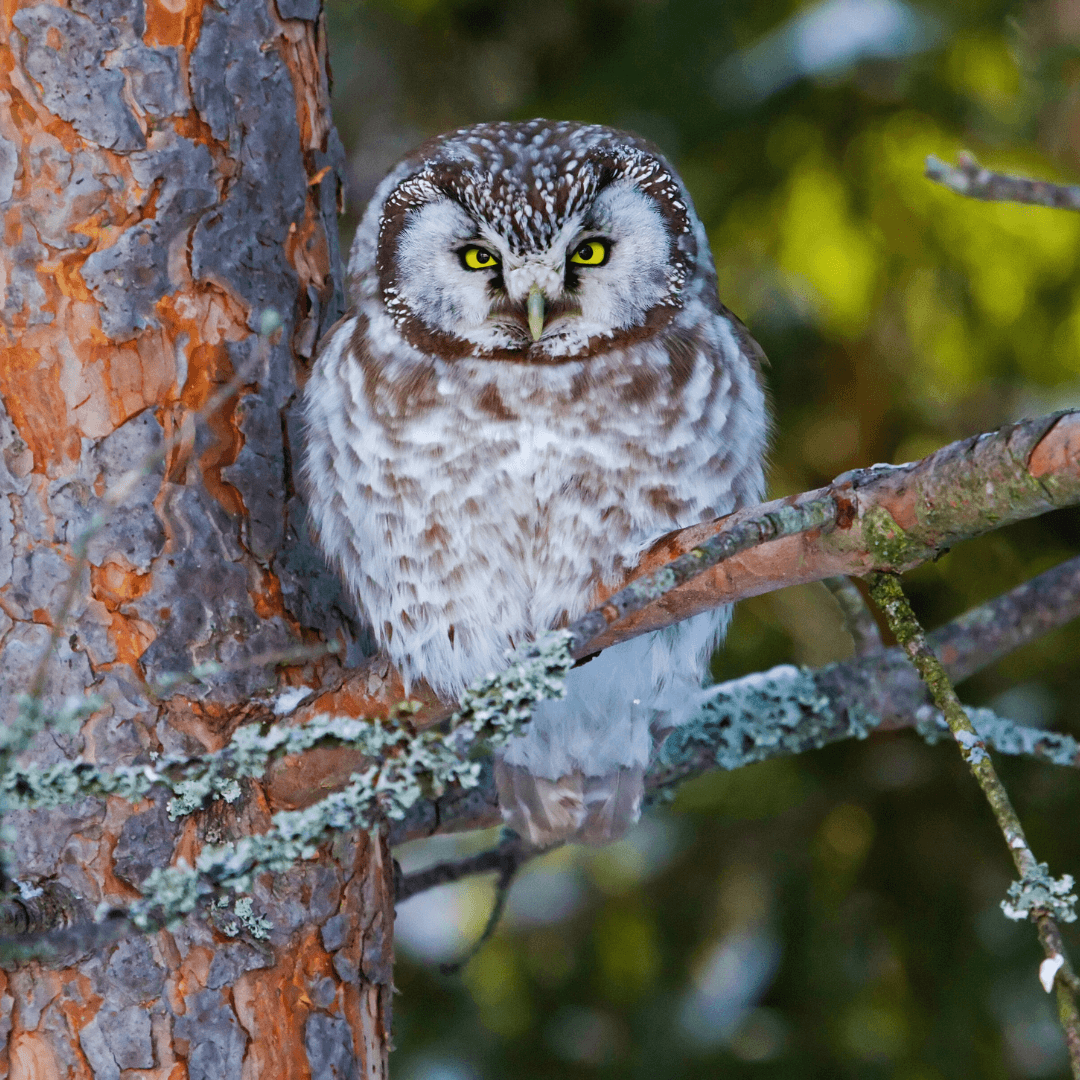
17. Boreal Owl (Aegolius funereus)
The boreal owl (Aegolius funereus), also known as Tengmalm's Owl, is a small owl that lives in the boreal forests of Canada and the northern United States.
With a length of around 9 to 11 inches and a wingspan of approximately 21 to 24 inches, it possesses a distinctive white facial disk that sets it apart.
One of its notable features is its melancholic call, which resonates through the dense forest canopy at night.
This owl species is highly adapted to its cold, northern habitat. It relies on its exceptional hunting skills to capture small rodents and birds in darkness.
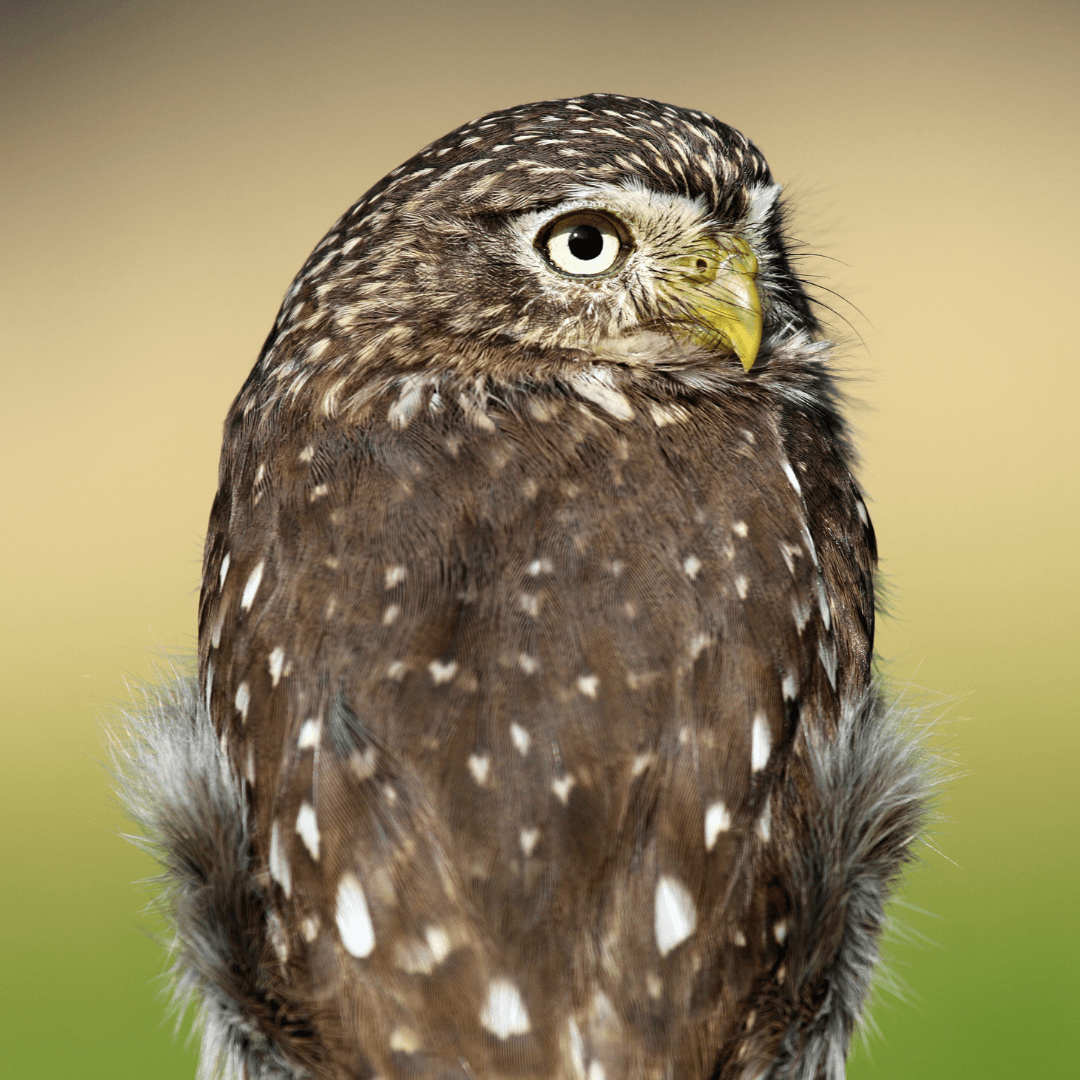
18. Ferruginous Pygmy-Owl (Glaucidium brasilianum)
The Ferruginous Pygmy-Owl (Glaucidium brasilianum) is a small but fierce owl species characterized by its reddish-brown plumage and piercing yellow eyes.
It may be found mostly in the southernmost parts of Texas and Arizona. It is only 6 to 7 inches long and has a wingspan of about 14 to 16 inches.
Unlike many owl species, the Ferruginous pygmy owl is known for its daytime activity, making it more readily observed by birdwatchers.
Despite its diminutive size, it possesses formidable hunting skills, preying on various small vertebrates and insects with remarkable agility and precision.
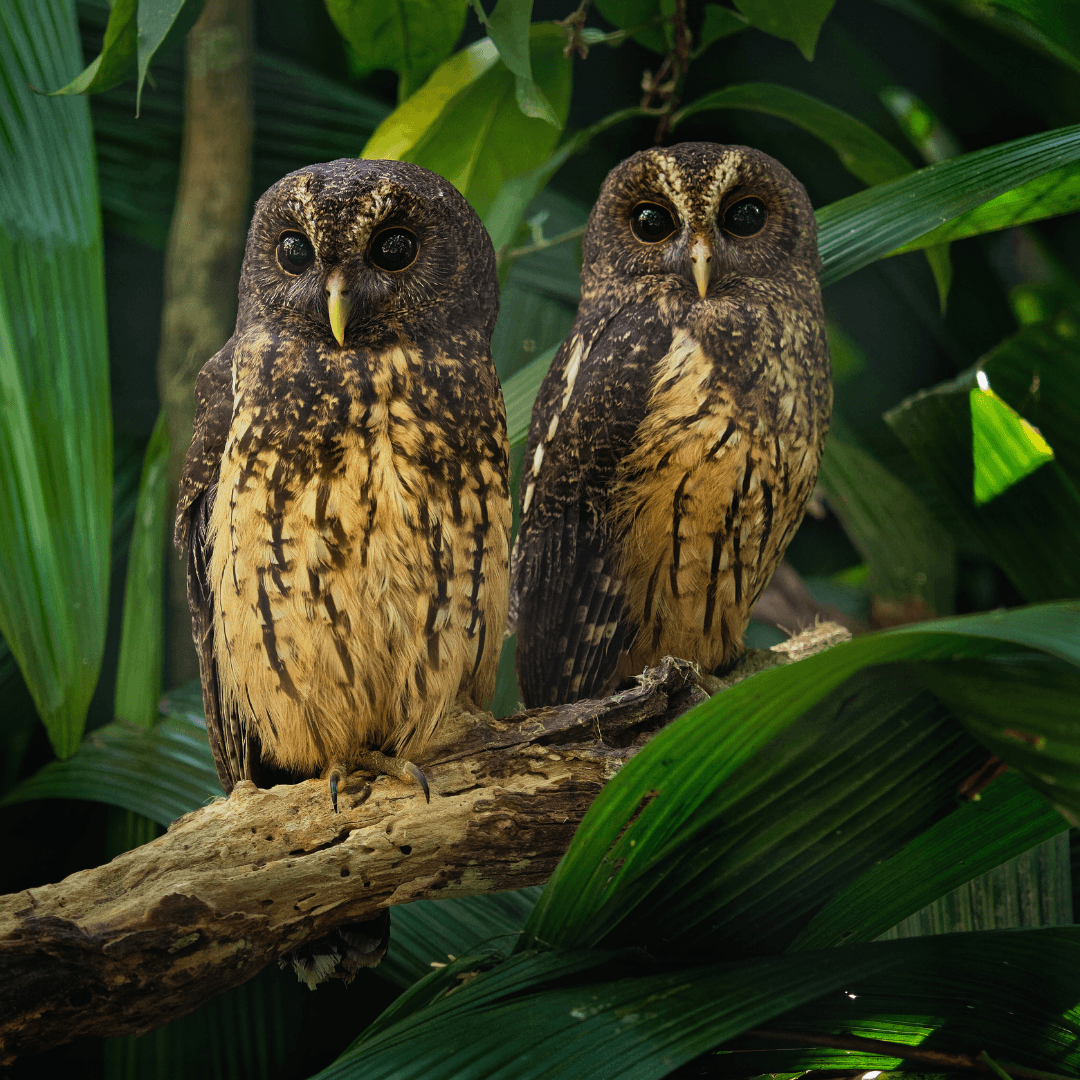
19. Mottled Owl (Ciccaba virgata)
The Mottled Owl (Ciccaba virgata) is primarily native to Central and South America but occasionally extends its range to the southernmost parts of Texas.
This medium-sized owl exhibits a striking mottled pattern on its feathers, complemented by dark eyes.
It is one of the smaller species of owl, measuring between 14 and 16 inches in length and roughly 34 to 38 inches in wingspan.
Despite its relatively limited presence in North America, the Mottled Owl plays a significant ecological role wherever it occurs.
Through predation on small mammals and birds, it contributes to the delicate balance of its forested habitats.

20. Striped Owl (Asio clamator)
The Striped Owl (Asio clamator) is predominantly native to Central and South America but is occasionally spotted in the southern regions of Texas.
This owl species is notable for its striking black-and-white facial markings, which contrast dramatically with its dark eyes.
With a length typically ranging from 13 to 15 inches and a wingspan of approximately 30 to 36 inches, it possesses a moderate size among owl species.
Its distinctively striped body pattern is a defining feature, further enhancing its visual allure.
Despite its sporadic presence in North America, the Striped Owl contributes to the biodiversity of its habitats through its role as a nocturnal predator.

21. Stygian Owl (Asio stygius)
The Stygian Owl (Asio stygius) is a rarely seen owl species in North America, known for its large size, dark plumage, prominent ear tufts, and striking yellow eyes.
It is a formidable presence in its habitat. It is approximately 15 to 17 inches long and has a wingspan of 40 to 44 inches.
While primarily native to Central and South America, it occasionally ventures into the southernmost regions of Texas.
This owl species demonstrates a preference for dense, tropical forests, where it hunts for small mammals and birds under the cover of darkness, contributing to the intricate balance of its ecosystem.
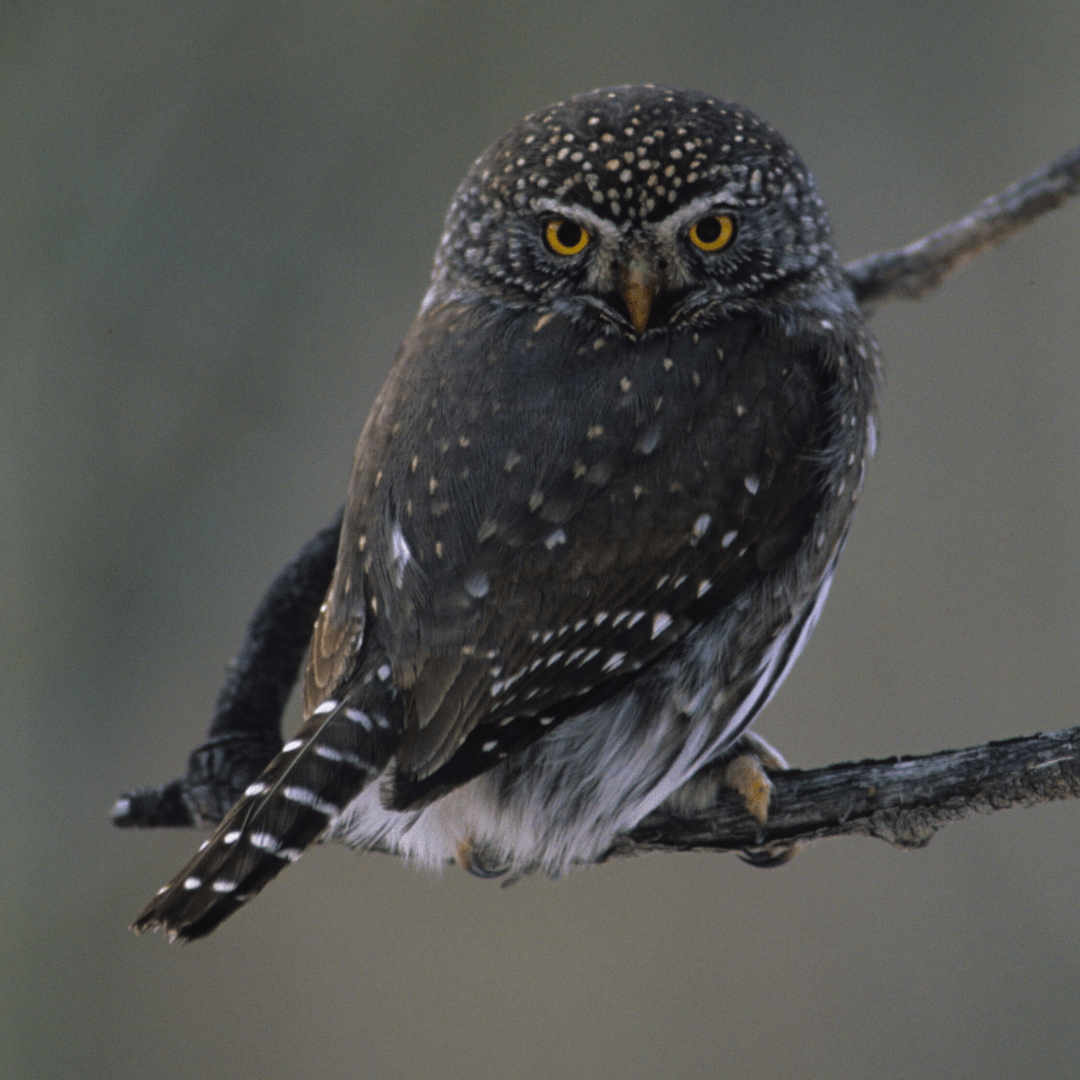
22. Northern Pygmy-Owl (Glaucidium gnome)
At around 6 to 7 inches in length and 12 to 14 inches in wingspan, the Northern Pygmy Owl is a formidable predator despite its diminutive stature.
Found in various forested habitats across western North America, including coniferous forests and mixed woodlands, it is known for its aggressive behaviour and fearless demeanour.
This owl species preys on small birds, rodents, and insects, using its keen eyesight and swift flight to capture prey.
Its ability to adapt to diverse environments makes it a resilient and adaptable predator in North American forests.
FAQ
1. What is the largest owl in North America?
Answer: The Great Gray Owl is the largest owl species in North America. With a wingspan of up to 60 inches (152 cm) and a body length of up to 33 inches (84 cm), this impressive bird is known for its large size, distinctive facial disk, and dense, fluffy plumage.
Despite its size, the Great Gray Owl is relatively lightweight, allowing it to glide silently through its forested habitats.
2. What is the smallest owl in North America?
Answer: The smallest species of owl found in North America is the Elf Owl. This little owl, which is about 1.4 ounces (40 grams) in weight and just 5 to 6 inches (13 to 15 cm) long, is well-known for its adorable appearance and small size.
The Elf Owl primarily inhabits desert regions and often nests in old woodpecker holes in cacti and trees.
Conclusion
In conclusion, the diverse array of owl species inhabiting North America represents a tapestry of adaptation, resilience, and ecological significance.
From the majestic Great Horned Owl to the diminutive Elf Owl, these birds of prey exhibit a remarkable range of sizes, habitats, hunting strategies, and behaviours.
Whether soaring silently through dense forests, gliding over open grasslands, or perching on urban rooftops, North American owls play vital roles as apex predators, controlling populations of rodents and insects while contributing to the intricate balance of their ecosystems.
Their presence enriches the natural world and captivates the human imagination, serving as emblematic symbols of wilderness and wonder in the vast landscapes of North America.
I trust you enjoyed this Types Of North American Owls article. Please stay tuned for more blog posts soon. Take care!
JeannetteZ
Your Opinion Is Important To Me
Do you have thoughts, ideas, or questions? I would love to hear from you. Please leave me your questions, experiences, and remarks about this article, Types Of North American Owls, in the comments section below. You can also email me at Jeannette@Close-To-Nature.org.
Disclosure
This post may contain affiliate links. As an Amazon Associate and other affiliate programs, I earn from qualifying purchases at no extra cost to you. Please read my full affiliate disclosure.
You might also enjoy these blog posts:
Fun Facts About The Northern Cardinal
Interesting Facts About Mourning Doves
Symptoms Of Omega-3 Deficiency
Best Soil For Growing Vegetables
Best Ways To Prepare Soil For Fruit Trees

